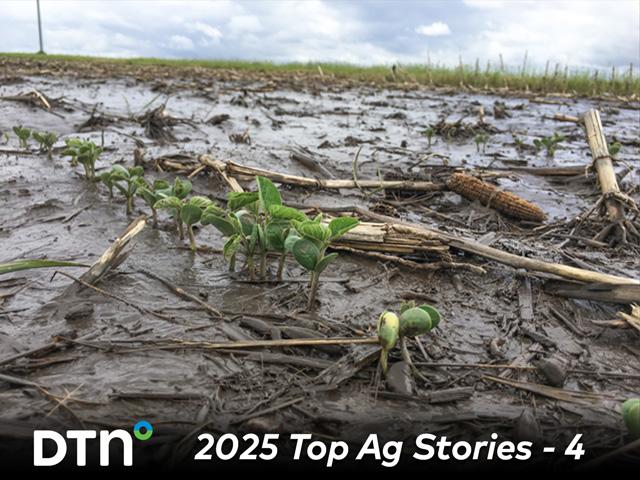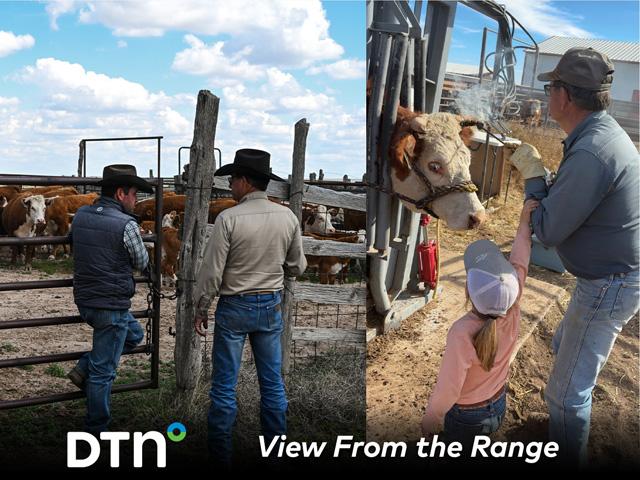CRP Sign-Up Set
Farm Service Agency Opens CRP Enrollment Through Feb. 28, 2020
OMAHA (DTN) -- USDA is set to open sign-up for the Conservation Reserve Program on Dec. 9 to include both general and continuous enrollments, the Farm Service Agency announced in a press conference on Thursday.
There are 22 million acres enrolled in CRP. The 2018 farm bill raised the cap to 27 million acres. Bradley Karmen, FSA assistant deputy administrator for farm programs, said general sign-up will run through Feb. 28, 2020.
FSA Administrator Richard Fordyce said the agency will be flexible for farmers in terms of enrollment.
"I think that we'll look at the numbers and the offers," Fordyce said. "We want to be as accommodating as we can be to landowners. We want to be has helpful as we can to satisfy the desires of landowners. We have a lot of work ahead of us. We're going to see a number of acres come out with expiring acres and we know we've got room and lots of opportunities to get in."
FSA also recently posted updated soil rental rates for CRP. Soil rental rates are prorated at 90% for continuous sign-up and 85% for general sign-up. The rental rates will be reviewed annually. Under continuous sign-up, producers also receive incentives that include a sign-up incentive payment and a practice incentive payment.
The 2018 farm bill lowered rental rates and requires USDA to survey rental rates more frequently. Landowners were cashing out high CRP rates in the past and locking in 15-year contracts, and the changes are meant to stop that.
Karmen said the upcoming sign-up could be the largest the program has seen in a decade, considering the number of acres lost this past growing season to weather disasters.
P[L1] D[0x0] M[300x250] OOP[F] ADUNIT[] T[]
DTN Lead Analyst Todd Hultman said the expanded CRP acres would help to ease some of the bearish pressure on new-crop prices and may help farmers in flood-prone areas.
As it currently stands, 2019 plantings of corn, soybeans and wheat totaled 211.6 million acres in 2019. That was down 14.5 million from last year's 226.1 million acres. USDA's early estimate is for 94.5 million acres of corn plantings in 2020.
Hultman said that adding acres to CRP "should help ease some of the bearish concern of new-crop plantings, but I would not expect it to have a significant impact on crop prices."
The National Sustainable Agriculture Coalition said in a statement it is hopeful the FSA keeps continuous sign-up open to landowners.
"It is our strong hope that the continuous sign-up will never again be shut down as it has been several times in recent years," the group said. "There is no reason that FSA cannot manage CCRP (continuous CRP) so that the continuous sign-up is just that -- continuous. While we are pleased that CCRP and CLEAR (Clean Lakes, Estuaries and Rivers) are restarting, we are disappointed that the new interim final rule addresses only the adjunct CLEAR 30 pilot project but not CLEAR itself. This surprising oversight must be corrected in the final version of the rule."
In addition, the coalition said it will be monitoring the sign-up to make sure farm bill sign-up incentive payments and practice incentive payments are "fully utilized and made available for all practices and at the maximum levels."
The CRP was initially authorized by the 1985 farm bill. The program provides financial compensation to landowners through an annual rental rate to voluntarily remove land from agricultural production for usually 10 to 15 years.
There are two types of enrollment through CRP: general and continuous. General enrollment allows landowners to enroll in a competitive bidding fashion for a specific period. Unlike general enrollment, farmers can enroll at any time in continuous enrollment not subject to competitive bidding.
According to an FSA news release, the CRP has prevented more than 9 billion tons of soil from eroding, has reduced nitrogen and phosphorous runoff relative to annually tilled cropland by 95% and 85%, respectively. The program has sequestered an annual average of 49 million tons of greenhouse gases, equal to taking 9 million cars off the road, according to the FSA.
In addition, the CRP has created more than 3 million acres of restored wetlands while protecting more than 175,000 stream miles with riparian forest and grass buffers.
Find more details about the program here: https://www.fsa.usda.gov/….
Todd Neeley can be reached at todd.neeley@dtn.com
Follow him on Twitter @toddneeleyDTN
(SK/AG)
Copyright 2019 DTN/The Progressive Farmer. All rights reserved.



